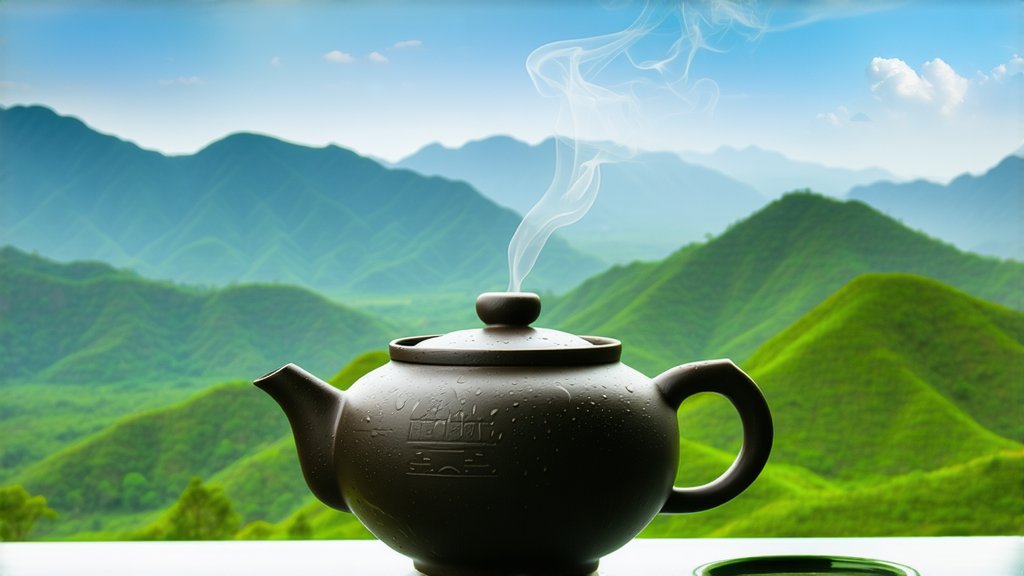
In the vast and diverse landscape of Chinese tea culture, few varieties captivate the senses and imagination quite like Keemun Black Tea. Originating from the picturesque hills of Anhui Province, this exquisite tea has garnered international acclaim for its rich history, unique flavor profile, and meticulous craftsmanship. As a revered member of the black tea family, Keemun stands as a testament to China's centuries-old tea tradition and its enduring influence on global tea culture.
Historical Tapestry: Tracing the Roots of Keemun
The story of Keemun Black Tea begins in the early 19th century, during the Qing Dynasty, when it was discovered by a visionary named Xu Ganlu from the village of Wangwu in Qimen County. This serendipitous find led to the development of what would later become one of China's most celebrated teas. Named after the region where it was first cultivated, Keemun (also spelled Qimen) quickly gained popularity among locals before making its way onto the world stage. Its rise to prominence was further propelled by its selection as one of the three key ingredients in the renowned English Breakfast blend, alongside Assam and Ceylon teas.
A Symphony of Varieties: Exploring Keemun's Diversity
Keemun Black Tea is not a monolith but rather a spectrum of flavors and aromas, each variety reflecting the specific terroir and processing techniques employed. Among the most notable types are:
-
Huang Shan Mao Feng: Often considered the pinnacle of Keemun production, this tea is characterized by its golden tips and delicate, orchid-like fragrance. It hails from the Huangshan Mountain area, where cooler temperatures and higher altitude contribute to its refined taste.
-
Gong Mei (Kung Mei): Known for its robust body and sweet aftertaste, Gong Mei is made from leaves harvested later in the season, typically in late spring or early summer. Its fuller flavor profile makes it a favorite among those who prefer a stronger cup.
-
Xian Hao Yin Hao (Premium Downy Tips): This premium grade features young, tender leaves and buds covered in fine downy hairs, giving it a particularly smooth texture and a bright, fruity flavor with hints of honey and malt.
-
Special Grade Keemun: Falling between the premium and standard grades, special grade Keemun offers a balance of complexity and accessibility, appealing to both connoisseurs and casual drinkers alike.
Crafting Perfection: The Art of Keemun Production
The journey from leaf to cup in Keemun Black Tea involves a series of intricate steps that require skill, patience, and a deep understanding of the natural elements. Here’s an overview of the traditional process:
-
Plucking: Only the top two leaves and the bud are selected during plucking, ensuring the freshest and finest quality.
-
Withering: Freshly picked leaves are spread out thinly on bamboo mats under direct sunlight or indoors in a controlled environment to reduce moisture content gradually.
-
Rolling: Withered leaves are then rolled using specialized machines or by hand to break down cell walls, releasing essential oils and enzymes that will later contribute to the tea's aroma and flavor.
-
Oxidation: Rolled leaves are spread out again to undergo oxidation, a crucial step where polyphenols react with oxygen, transforming into theaflavins and thearubigins responsible for black tea's characteristic color and taste. This process can take several hours and is carefully monitored to achieve the desired level of oxidation.
-
Firing: To halt oxidation, leaves are subjected to high heat through a series of roasting sessions. This step also develops the final flavor profile and fixes the tea's distinctive aroma.
-
Sorting and Grading: Once dried, the tea is sorted according to size, shape, and quality, separating out different grades and removing any imperfections.
-
Packaging: Finally, the finished tea is packaged in airtight containers to preserve its freshness until it reaches the consumer.
Savoring the Essence: How to Appreciate Keemun Black Tea
To truly appreciate Keemun Black Tea, one must engage in a mindful tasting ritual that honors its complexity and depth. Here’s a guide to savoring this exceptional brew:
-
Choosing the Right Equipment: Use a transparent glass teapot or a Yixing clay pot to observe the tea's color and unfurl beautifully. A thermometer can help maintain the optimal water temperature.
-
Water Quality Matters: Use freshly drawn, filtered water heated to around 90-95°C (194-203°F). Avoid boiling water as it can scorch the delicate leaves.
-
Measurements: For every 150ml of water, use approximately 3 grams of loose leaf tea or one tea bag. Adjust according to personal preference for strength.
-
Steeping Time: Steep for 3-5 minutes, depending on your desired strength. Keemun generally tolerates longer steeping times without becoming bitter due to its lower tannin content.
-
Observation: Admire the vibrant amber hue of the liquor, a hallmark of Keemun's quality. Note any subtle changes in color as the tea cools.
-
Aroma: Before taking your first sip, inhale deeply to capture the tea's complex bouquet, which may include notes of florals, fruits, and earthy undertones.
-
Tasting: Take small sips, allowing the tea to coat your palate fully. Notice the initial sweetness, followed by a gentle astringency and a lingering aftertaste that hints at its mountainous origins.
-
Multiple Infusions: Keemun Black Tea is known for its ability to yield multiple infusions, each revealing new layers of flavor. Increase steeping time slightly for subsequent brews.
In conclusion, Keemun Black Tea is more than just a beverage; it embodies a legacy of craftsmanship, a connection to nature, and a bridge between cultures. Whether you're a seasoned tea aficionado or a curious newcomer, exploring the world of Keemun promises a journey filled with discovery, delight, and profound appreciation for one of China's greatest gifts to the world.